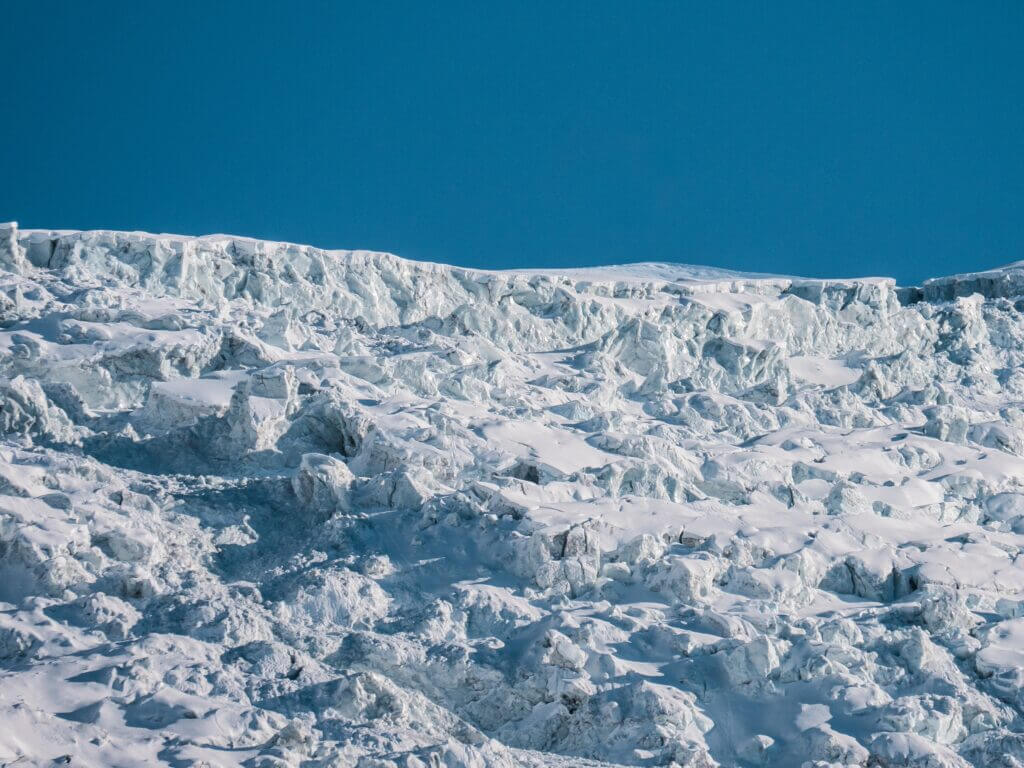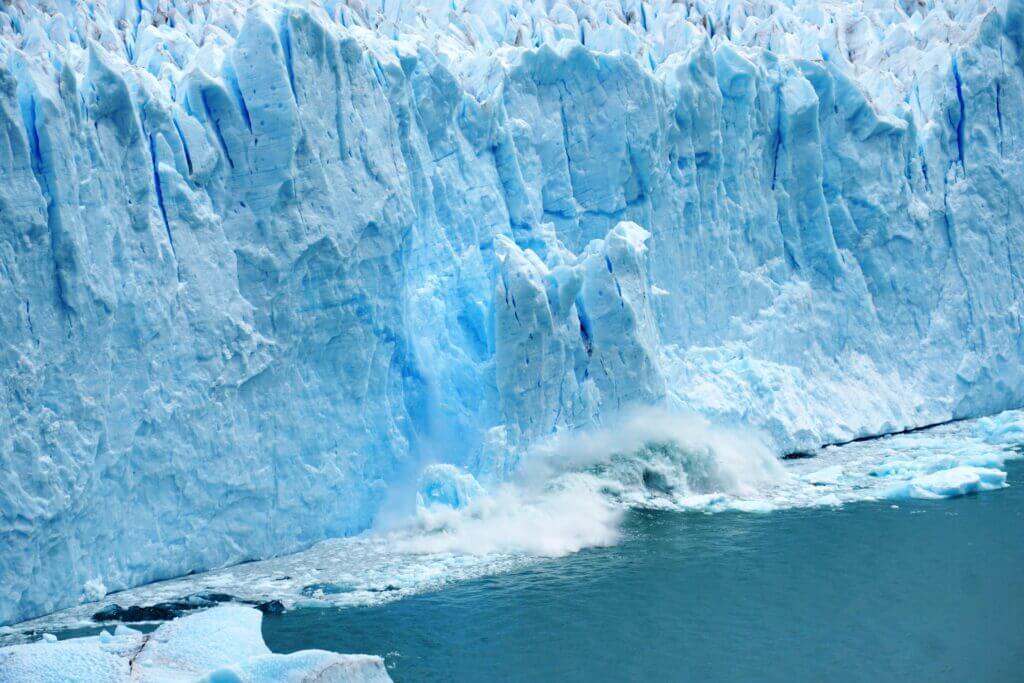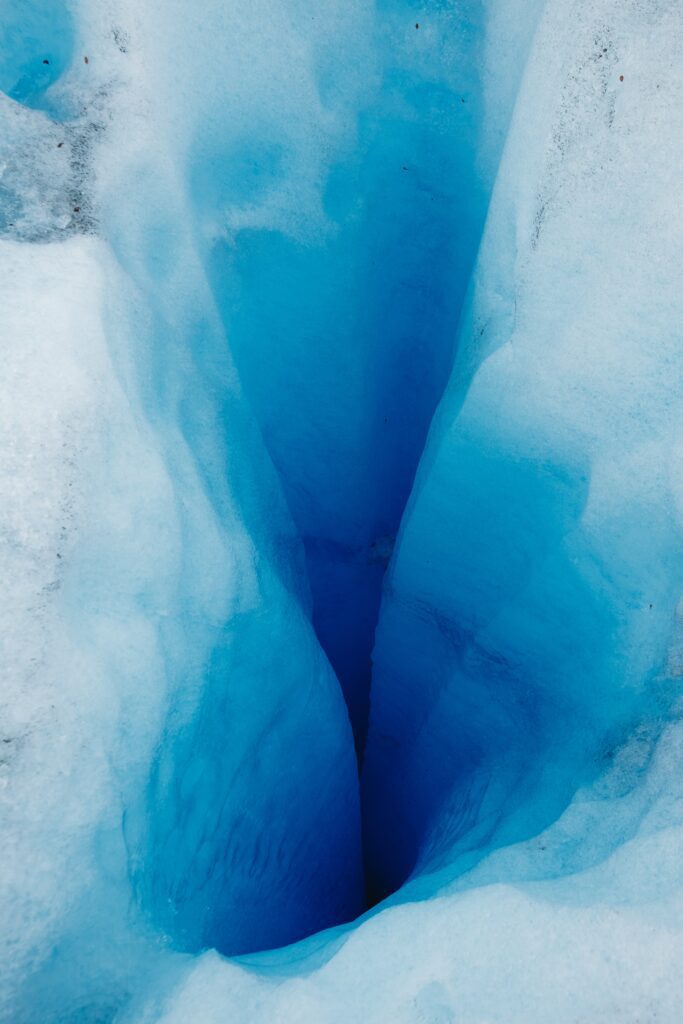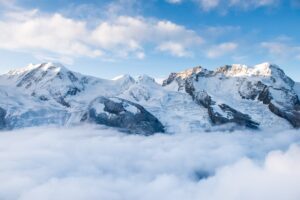Glaciers are large bodies of ice. It forms on land from the accumulation of snow and other forms of precipitation. In addition, it has or shows signs of the past or present movement. It is a perennial mass, meaning it exists for many years and is not seasonal.

The definitions for the terms “large,” “perennial,” and “flow” regarding glaciers are not strictly defined. Even small snow patches that last for more than one season have similar characteristics to true glaciers, except for their size. One international organization has proposed that any snow or ice masses larger than 0.1 square kilometres should be considered glaciers.
What are the different types of Glaciers?
We can divide Glaciers into three main categories:
- Glaciers that are confined to a specific path that directs the movement of ice are referred to as mountain glaciers.
- Glaciers that spread out on flat areas of land or on the ocean near areas covered by glaciers are called piedmont glaciers or ice shelves, respectively. These types of glaciers are not independent. They are considered in relation to their source. For example, ice shelves with ice sheets and piedmont glaciers with mountain glaciers. An ice field is a group of mountain glaciers that cover a significant portion of a mountain range.
- Ice sheets and ice caps are types of glaciers that cover a large area and move in all directions. An ice sheet is a glacier that is as large as Antarctica or Greenland. An ice cap is a smaller glacier that spreads out in a continuous sheet.
When did we find Glaciers?
The world’s ice cover has expanded and contracted repeatedly over the past 30 million years. During major glacial stages, ice covered large areas of North America, Europe, Scandinavia, and Siberia.
The Pleistocene Epoch, lasting from 2.6 million to 11,700 years ago, saw ice cover 30% of the world’s land area at times. At other times the ice cover was smaller than it is today.
The repeated expansion and contraction of the world’s ice cover in recent geological time (around 30 million years ago to the present) has had a significant influence on various environments. This includes geological, climatological, and biological environments. It also impacted the evolution and development of early humans. One can say that the world is still in an ice age. In this context, current ice refers to the term “glacier”.
What are Glaciers today?
Currently, the ice in glaciers holds about 75% of the world’s fresh water. Glaciers cover about 11% of the earth’s land surface. If all the ice were to melt, it would lead to a 90-meter (300-foot) rise in sea level.
Glaciers are found all over the world and at nearly all latitudes, even in places like Uganda, Ecuador, Kenya, and Irian Jaya (New Guinea) at high elevations near the equator.
What is the relation between Glaciers and Climate?
We do not yet fully understand the reason for the fluctuations in the world’s glacier cover.
It has been established that alterations in the amount of solar heat received by the Earth, resulting from variations in the Earth’s orbit, are linked to significant fluctuations in the advance and retreat of ice sheets over extended periods.
Additionally, large ice sheets contain various “instability mechanisms”. They may have played a role in significant changes to the global climate.
Impact of higher Albedo
One of these mechanisms is the high albedo, or reflectivity, of dry snow to solar radiation. The albedo of dry snow is higher than any other widespread material on Earth.
As an ice sheet expands, more of the sun’s radiation reflects back into space, which leads to less absorption of solar radiation on Earth and a cooler global climate.
Glaciers’ thickness and geographic precipitation
Another instability mechanism is the fact that as the ice sheet becomes thicker and more extensive, it receives more snowfall in the form of “orographic precipitation”.
Orographic precipitation is a type of precipitation that occurs when a physical barrier forces air to rise, such as a mountain range. As the air rises, it cools, and the moisture it contains condenses to form clouds and precipitation.

This process, called “orographic lift,” leads to the windward side of a mountain range receiving more precipitation than the leeward side. This type of precipitation is an instability mechanism. As the thicker and more extensive an ice sheet is, the more snowfall it will receive in the form of orographic precipitation.
Influences of ice streams
We found a potential instability mechanism in the West Antarctic Ice Sheet Particularly where certain parts called ice streams may rapidly shift outwards, possibly caused by the accumulation of a substantial layer of wet and pliable material beneath the ice.

Scientists do not fully understand the exact reasons for the cycles of ice ages, however, they do concur that the balance between the Earth’s ice cover and climate is delicate.

